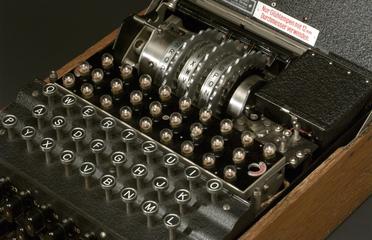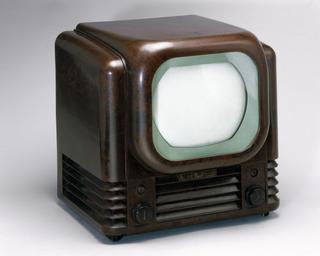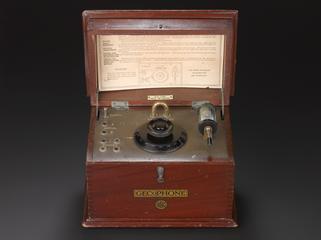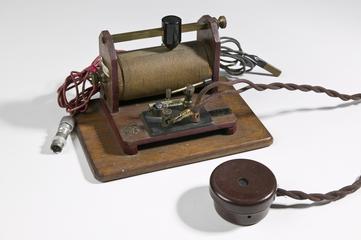
Ekco SH25 radio in phenoilc plastic case, 1932
- Made:
- 1932 in Southend-on-Sea
- maker:
- E K Cole Limited

Ekco SH25 radio, 1932, restored 1973. 5-valve domestic receiver in Art Deco Bakelite case featuring large circular tuning scale around metal speaker grille depicting treescape
The EKCO SH25 five-valve domestic radio receiver was an early example of a mass-produced mains table wireless and was the first set to have the stations marked on the dial, a large circular tuning scale. The Art Deco case, designed by J. K. White, exploited the possibilities of Bakelite, a new plastic which enabled complex shapes to be moulded in high-speed industrial processes. The Art Deco style was popular for such small decorative household objects. The innovative design also included a metal speaker grille depicting a treescape.
The SH25 was the first superheterodyne radio made by E K Cole and Co Ltd. In 1917, Edward Howard Armstrong (1890-1954) developed the superheterodyne electronic circuit, which significantly improved the sensitivity and selectivity of radio receivers over a wide range of frequencies, making amplifier tuning unnecessary. This made the task of tuning the radio receiver to different stations much more simple and straightforward. Radios with superheterodyne circuit technology are commonly known as ‘superhets’.
The EKCO company was a British electronics company from 1924 to 1960 and was named after its founder Eric Kirkham Cole. They first made radio receivers and later expanded into television receivers and other electronic goods.
Details
- Category:
- Radio Communication
- Object Number:
- 1990-8
- Materials:
- phenol formaldehyde (Bakelite), celluloid (cellulose), brass (copper, zinc alloy), steel (metal), copper (metal), glass, fibreboard and electronic components
- Measurements:
-
overall: 455 mm x 410 mm x 300 mm, Wt.19kg
- type:
- radio receiver
- credit:
- Peverett, A.




